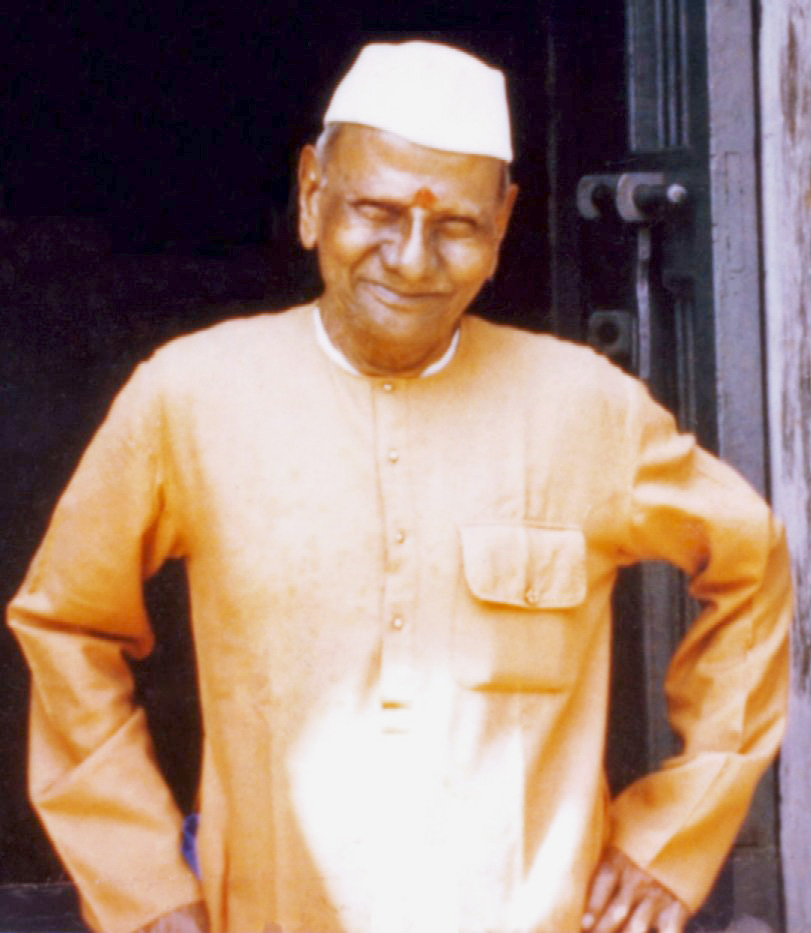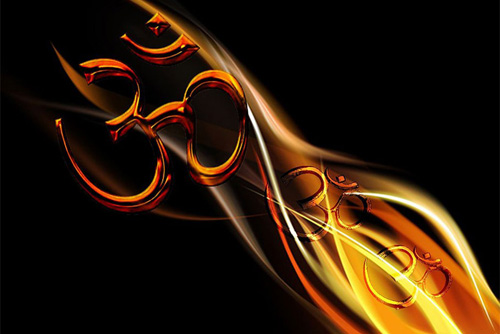
Sri Nisargadatta Maharaj Life
Sri Nisargadatta Maharaj was born on April 17, 1897, at break of dawn, the full moon of Chaitra, to Shivrampant Kambli and Parvatibai, in Bombay, as the second eldest of six children. The day was the birthday of Lord Hanuman, the monkey-king and selfless, fearless helper of Lord Rama in Ramayana. Hence he was named ‘Maruti’, which is one of the names of Lord Hanuman.
Though born in Bombay, Maruti Shivrampant Kambli was brought up in Kandalgaon, a small village in the Ratnagiri district of Maharashtra State, because his father Shivrampant, who had been employed by a merchant in Bombay, had moved the family to the countryside in 1896 when a plague-epidemic broke out in the city. Here he grew up amidst his family of six siblings, and deeply religious parents. His father, Shivrampant, worked as a domestic servant in Mumbai and later became a petty farmer in Kandalgaon.
We learn from a biographical booklet that “Maharaj’s father Shivrampant Kambli and mother Parvatibai were both ardent devotees…. who observed very rigorously the traditional fasts and holy days. His father loved to sing bhajans (devotional songs)… Sivrampant had in his possession a number of traditional holy books which he read regularly and devoutly.”
In his youth, Maruti performed all the forms of hard labor required by life on a farm. Though he received little formal education, he was exposed to spiritual ideas by quietly listening to and absorbing the conversations between his father Shivrampant and the latter’s friend, Visnu Haribhau Gore, a pious Brahmin.
In 1915, after his father passed away, and in 1920, Maruti moved to Bombay to support his family, following his elder brother. Initially he worked as a junior clerk at an office but quickly he opened a small goods store, mainly selling bidis – hand-made cigarettes, and soon owned a string of eight retail shops. In 1924 he married Sumatibai and they had three daughters and a son.
In 1933, he was introduced to his Guru, Sri Siddharameshwar Maharaj, the head of the Inchegeri branch of the Navnath Sampradaya, by Maruti’s friend Yashwantrao Baagkar. Nisargadatta was given with simple instructions which he followed verbatim. Following his guru’s instructions to concentrate on “I Am”, he utilized all his spare time looking at himself in silence, and remained in that state for the coming years, practicing meditation and singing devotional bhajans.
Maharaj said : “My Guru ordered me to attend to the sense ‘I am’ and to give attention to nothing else. I just obeyed. I did not follow any particular course of breathing, or meditation, or study of scriptures. Whatever happened, I would turn away my attention from it and remain with the sense ‘I am’. It may look too simple, even crude. My only reason for doing it was that my Guru told me so. Yet it worked!”
After an association of nearly two and a half years, Sri Siddharameshwar Maharaj passed away on Nov 9, 1936. Soon he adopted a new name, ‘Nisargadatta’ meaning the one who dwells in the natural state. He was also appointed as the spiritual head of the Inchegeri branch of Navnath Sampradaya, the ‘Nine Masters’ tradition, a place he retained through his life.
In 1937, he left Mumbai and traveled across India, eventually returned to his family in Mumbai in 1938. His business had been virtually wiped out, but eventually succeeded in opening a tiny street-shop beside his apartment as an income source for his family. Between 1942-1948 he suffered two personal losses, first the death of his wife, Sumatibai, followed by the death of his daughter.
In 1951, after receiving an inner revelation from Siddharamesvar, he began to initiate students into discipleship. After he retired from his shop in 1966, Sri Nisargadatta Maharaj continued to receive and teach visitors in his home, giving discourses twice a day. In 1972, he was introduced to the wider world of spiritual aspirants by several pages on him in Peter Brent’s book, Godmen of India. In 1973, the amazing book, “I am That” was published, in which the wonderful translations of the teachings of Sri Nisargadatta Maharaj were offered by Mr. Maurice Frydman.
By the latter 1970s, the Maharaj’s traveling had largely dropped off due to old age and illness, the throat cancer that was diagnosed in 1980. During the last years, 1979-1981, though his body was very weak, the talks were highly advanced. These were taped and later edited by Jean Dunn and published as three books.
Sri Nisargadatta Maharaj gave up his body on September 8, 1981 at the age of 84. But He is eternal. And his Teachings will always prevail.
References :
http://sri-nisargadatta-maharaj.blogspot.in/2014/11/biography-of-nisargadatta-maharaj.html
http://www.enlightened-spirituality.org/Nisargadatta_Maharaj.html
 Meditation is Life and Happiness
Meditation is Life and Happiness Ramana Maharshi Teachings
Ramana Maharshi Teachings Timeless Teachings Of Sages From India
Timeless Teachings Of Sages From India Versatile Recipes – Veg and Vegan
Versatile Recipes – Veg and Vegan